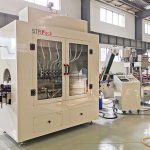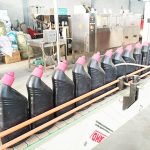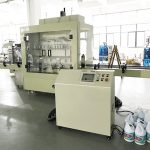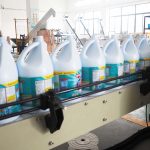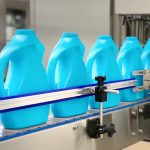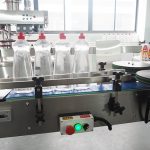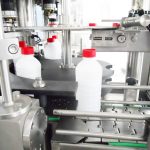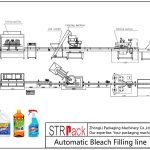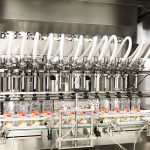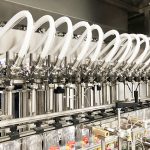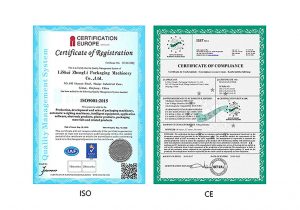1L-5L Bleach Liquid Bottle Filling Machine & Capping Machine
Bleach Bottle Filling line , bottle filler with capper, Induction and Two side labeler Machine
Filling Machines Considerations for Bleach Products
Commercially produced bleach has to be carefully handled. Manufacturers have to take special considerations for chlorine gas, product dissipation, and packaging to ensure the quality and safety of bleach products before they reach the market.
Sodium hypochlorite, or household bleach, products are hazardous. They are corrosive and can produce toxic fumes that are dangerous to inhale. Prolonged contact with bleach gases or product can seriously affect the lungs, throat, and eyes. There are strict regulations regarding the manufacturing process of bleach that packaging companies must consider to protect workers and maintain the integrity of the substance.
When speaking of “corrosive chemicals” the general context is in the acid filling and bleach industries. Hydrochloric acid and sulfuric acid are common applications. Bleach means not only low laundry concentrations but also industrial concentrations of sodium hypo-chlorate. As discussed in other sections, the Time Gravity Filling Machine is used for filling free flowing, non foaming liquids and it has some degree of flexibility of container size and geometry even though corrosives filling is typically dedicated to a particular product with a very limited fill size range.
These chemicals are so corrosive to machinery that even the atmosphere where the filling machines are installed can be destructive to any metal assets in the area as well as hazardous to personnel. Metal fasteners used in the assembly of a conventional time gravity filling machine will degrade within 6 months and the filling machine will start to come apart. Even the control system is isolated so that it is continually being purged with clean outside air even when the machine is not in use. This protects the electronic components from premature failure.
Time gravity filling machines for corrosive products are constructed entirely out of inert plastic and fiberglass with even the fasteners (nuts and bolts) being made of fiberglass. All valves and fluid paths are specified for compatibility with the extreme products being filled. There is always fully enclosed guarding to protect personnel form splashing and spray during operation. These construction techniques and materials are somewhat unique and therefore these machines are typically manufactured at a premium to those made from mild or stainless steel or other metals.

